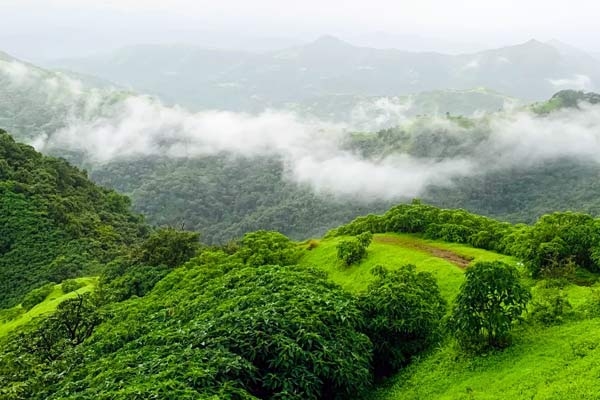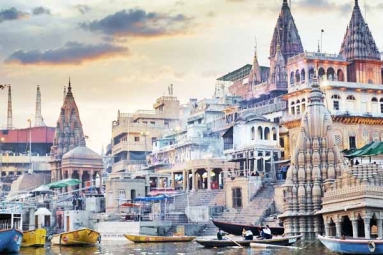
(Image source from: Canva.com)
As the monsoon descends upon India, the nation undergoes a remarkable transformation. Dust is replaced by rich greens, and a certain enchantment fills the atmosphere. Although many choose to avoid traveling during this time, those familiar with the region understand that the monsoon offers an unparalleled opportunity to experience India's magnificent UNESCO World Heritage Sites in a new light. From ancient caves shimmering with rain to verdant hilltop forts shrouded in fog, here are five locations where the monsoon not only beautifies the surroundings but also entirely alters the experience. Here are five UNESCO World Heritage Sites in India ideal for a trip during the monsoon:
Western Ghats, spanning Maharashtra to Kerala: The Western Ghats are a must-mention when discussing the monsoon. This extensive mountain range, measuring 1,600 kilometers and encompassing five states, ranks among the globe's eight premier hubs of biological diversity. Yet, during the monsoon season from June to September, the Ghats burst into exceptional vibrancy. Take a picturesque train ride from Mangalore to Goa, where each bend introduces a new waterfall cascading down the hillsides. If your journey leads you to Kerala, visit Wayanad or Silent Valley National Park for a chance to view rare animals such as the Lion-tailed macaque. Just remember to have a waterproof camera handy, as the rain can be relentless.
Chhatrapati Shivaji Maharaj Terminus in Mumbai: While it serves as an operational railway station, Chhatrapati Shivaji Maharaj Terminus (CSMT) is also an architectural gem reminiscent of Victorian Gothic styles, rivaling any European structure. In the rain, its stone facade appears like a scene from a historical film, while the surrounding streets buzz with typical Mumbai energy—people jostling for umbrella space, stopping for tea breaks, and playing cricket in the flooded streets. For the best vantage point, find a spot at one of the nearby cafes with windows facing the station. Be prepared, though: the Mumbai monsoon can be fierce. Sudden downpours, traffic jams, and bottomless puddles are all part of the experience.
Kaziranga National Park, Assam: This destination is a paradise for wildlife enthusiasts, albeit with a minor consideration. Kaziranga boasts the greatest population of one-horned rhinoceroses globally and earned UNESCO World Heritage status in 1985. During the heavy monsoon season, typically from May to October, the national park shuts its gates to visitors due to flooding from the Brahmaputra River. However, if you find yourself in the area in early June or late September when the waters are not too high, you may experience the park in its most striking form. Migratory birds populate the area, the wetlands glisten under overcast skies, and the sounds of the forest become more vibrant, lush, and untamed.
Valley of Flowers National Park, Uttarakhand: Nestled within Uttarakhand's Chamoli district, the Valley of Flowers lives up to its enchanting name—but only if you visit at the opportune moment. The ideal time to witness its splendor is from mid-July to mid-August, right in the midst of the monsoon season. In this brief timeframe, countless alpine flowers burst into bloom across the towering meadows, transforming the valley into a stunning, multicolored panorama. The trek spans approximately 17 kilometers and is not for the easily discouraged, as it features slippery paths and misty conditions. Nevertheless, those who persevere will be rewarded with breathtaking vistas, unique flora, and a profound sense of tranquility that lingers in memory.
Ajanta Caves, Maharashtra: Nestled in a horseshoe-shaped rock formation overlooking the Waghora River, the Ajanta Caves date back to the 2nd century BCE. The intricate frescoes and sculptures here represent some of the pinnacle achievements of ancient Indian artistry, depicting narratives from Buddha's life and explaining its inclusion on the UNESCO World Heritage list since 1983. During the monsoon, the environment becomes remarkably vibrant—waterfalls emerge around the caves, the forest teems with vitality, and the river swells beneath. With fewer visitors during this time, you may even find a peaceful moment alone with a painting that is over two millennia old.







